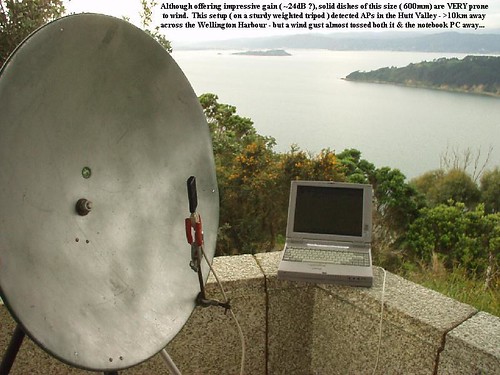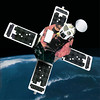Times are tough for Staten Island’s famous high-tech Teleport, according to the Staten Island Advance.
Billed as one of the region’s most secure communications centers for businesses, the 100-acre corporate campus has faced scepticism– and recurring difficulty attracting tenants– since it first opened in the 1980s. A New York Times article from 1988 reports:
The root of the problem is that office development is the secondary focus of the Teleport, a joint venture of Merrill Lynch, the Port Authority of New York and New Jersey, the City of New York and the Western Union Corporation.
The project’s centerpiece is an 11-acre field dotted by 14 satellite dishes. A concrete parapet 50 feet high surrounds the field to reduce electronic interference, and fiber-optic cables beam the satellite transmissions to companies throughout the New York metropolitan region.
But companies have been slow to sign on. The Teleport, in the northwest corner of Staten Island, about eight miles southwest of the ferry to Manhattan, has suffered from a stigma of being too far off the track. Although modest bus service exists, the Teleport is essentially a suburban project designed around the automobile.
For top executives of Manhattan companies with employees who rely on mass transit, the automobile orientation has killed the Teleport as a potential site for computer or back-office operations.
10 years later, during the dot-com boom, the Teleport was at the height of its success and occupancy rate– in large part because of the secure satellite and landline communication facilities it offered. The future looked bright for the "Teleport" model:
The Teleport Communications Group… built a satellite "infield" in the park that connected to a master control center. The center operates a fiber-optic network connecting all the new buildings in the teleport park and extends into Manhattan and Brooklyn. Primarily, the infrastructure allows companies to operate their mainframe data centers or have secure sites for servers and vital network equipment.
The Port Authority began to promote the unique characteristics of the world’s very first teleport to businesses that required access to broadband communications. It’s $70 million gamble has paid off and continues to deliver dividends. Today there are five fully leased buildings at the Staten Island site with rent above market rates. More than 2,100 people are employed in new jobs at the teleport, in industries including computer operations, communications, security, building services, back office functions and telecommunications.
The New York City teleport model is being followed in cities worldwide. In fact, experts say there may be as many as 200 of these new ports in existence by the year 2005.
But now, according to the Staten Island Advance, the Teleport looks less like the future than it does a ghost town:
Industry experts and developers say the troubling numbers here are skewed by the Port Authority-managed Teleport in Bloomfield, which recently lost its signature satellite dishes and where two buildings are completely empty. The worker population has dropped from a high of more than 3,000 in the late 1990s to 1,000 today.
New investments are being made to keep the Teleport’s high-tech infrastructure up to date. But will that be enough to lure companies back out to Staten Island?
Only time will tell.




 Epson has developed new 7.1-inch piece of
Epson has developed new 7.1-inch piece of 
